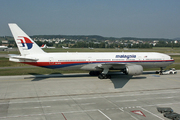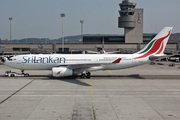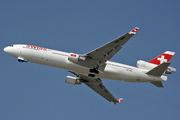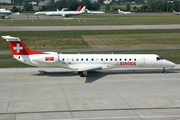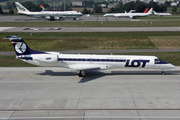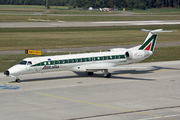Dépêches
747 Dubai Airplane Crash May Have Been Prevented
Dépèche transmise le 15 septembre 2010 par PRNewswire
HONOLULU, September 15, 2010 /PRNewswire/ -- The Boeing 747-400 plane that crashed near Dubai airport on September 3rd may have landed safely if the aircraft had been equipped with emergency vision technology. Vision safety equipment is installed on approximately 1,500 airplanes, including aircraft flown by high-ranking government officials, on executive business jets; however, it is only found on a few commercial airline fleets.
Preliminary reports and witness accounts from pilots in the area who listened to the crisis unfold via radio, indicate that there was smoke in the cockpit and the pilots could not see their instruments. The pilots were overheard to be "flying blind" before attempting to land, relying on information about speed, altitude and direction from air traffic controllers. The airplane eventually crashed killing both crew members.
The fire on board the 747-400 on September 3rd was not unusual. The former head of the FAA's Flight Standards authored a study in 2002, which stated that fire events occur on average in one out of every 5,000 flights. Another study by the Airline Pilots Association (ALPA) has indicated that in North America alone there are on average up to three smoke incidents per day, resulting in an average of one unscheduled or emergency landing per day.
Accident investigators worldwide, including the NTSB, have made numerous recommendations over the last forty years to address the serious unsafe condition of a smoke-filled cockpit. Regulations require that pilots must be able to see at all times, current technology and procedures (which have been in place for 50 years) to vent and dilute smoke have proven to be inadequate when dense smoke cannot be stopped.
Equipment is available that enables pilots to see under the conditions the crew may have experienced in the Dubai crash: dense, unstoppable smoke in the cockpit, rendering the pilots unable to see their instruments. This equipment, known as the "Emergency Vision Assurance System"(TM), or EVAS, is designed to allow pilots to see to safely land their aircraft during smoke emergencies. EVAS, is certified by the FAA, EASA, and other foreign regulatory air agencies.
EVAS technology displaces dense smoke during an in-flight emergency and creates a clear channel between the pilots masks, the vital instruments and the cockpit window. This allows pilots to see outside, to see their instruments, and read emergency checklists in all conditions of flight. As a result, pilots can safely navigate and land their airplanes.
Pilot unions recently brought the smoke-in-the-cockpit issue to the attention of Congress by sending letters stating that, "The public and airline crews deserve the same degree of safety and security" as "the Secretary of Transportation [and] the Secretary of Homeland Security" ... since their airplanes are equipped with technology to enable their pilots to see during even the worst smoke emergencies.
Many organizations fly with the Emergency Vision Assurance System(TM), including JetBlue Airlines in the United States, Swiss-based PrivatAir and NetJets. Government VIP aircraft in several countries, including the FAA and military airplanes carrying high-ranking officials, are also equipped with the technology. It is also standard equipment on state-of-the-art aircraft entering the aviation world today. To date however, most commercial operators are not equipped with the Emergency Vision Assurance System(TM), leaving almost all commercial passengers and crew unprotected from this serious flight hazard.
For further information or inquiries contact:
VisionSafe Corporation [email protected] www.visionsafe.com 2010 NBAA, Booth #6529.
CONTACT: Christian Werjefelt of VisionSafe Corporation, +1-808-235-0849,ext. 21, cell, +1-808-284-8069,
- 24/04Ibis Styles London Heathrow : l'hôtel géré par un passionné d'aviation pour les passionnés d'aviation (photos + vidéos)
- 23/04 SkyUp renouvelle son partenariat avec Wizz Air
- 23/04 Play : résultats de mars 2024
- 23/04 Les garde-côtes japonais commande trois Airbus H225 supplémentaires
- 23/04 Vueling et Make-A-Wish France signent un partenariat
- 23/04 TUI annonce ses destinations au départ de Deauville pour l'été 2024.
- 23/04 Twin Jet renforce son programme de vols sur la ligne Toulouse/Rennes
- 23/04 Norse Atlantic Airways : résultats du mois de mars 2024
- 23/04 Volotea renforce son offre entre Lille et le Maroc
- 22/04 Finnair a dévoilé son programme de vol pour les saisons hiver 2024 et été 2025
- 22/04 Qatar Airways annonce le lancement de vols à destination de Kinshasa
- 22/04 Vietnam Airlines et CAE prolongent leur accord
- 22/04 Mermoz Academy de Tours commande des Tecnam P-Mentor
- 22/04 Transavia France reçoit son 2e Airbus A320neo
- 20/04 Friedrichshafen 2024 : Blackwing présente un nouveau modèle de son BW650RG
- 20/04 Friedrichshafen 2024 : JMB Aircraft présente son Phoenix
- 19/04 Friedrichshafen 2024 : le projet "Fly To The North"
- 19/04 Friedrichshafen 2024 : Aura Aero présente pour la première fois ses trois appareils
- 19/04 Friedrichshafen 2024 : Duc Hélices présente son hélice Tiger-3
- 19/04 Friedrichshafen 2024 : Splash-in Aviation expose son Pétrel X


